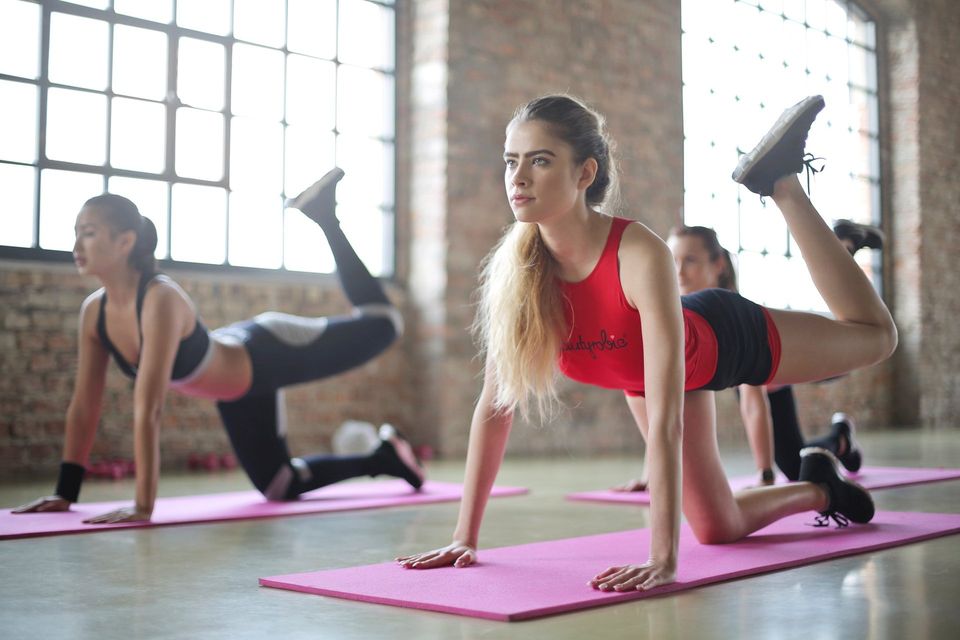March 24, 2020
Exercising With Osteoporosis
If you have osteoporosis, you might think exercise will lead to fracture. In fact, though, using your muscles helps protect your bones.
Stay active and safe

According to the Mayo Clinic, "Osteoporosis is a major cause of disability in older women. A bone-weakening disorder, osteoporosis often results in fractures in the hip and spine — which can severely impair your mobility and independence.
How can you reduce your risk of these life-altering injuries? Exercise can help.
Certain types of exercise strengthen muscles and bones, while other types are designed to improve your balance — which can help prevent falls."
What is the best exercise for Osteoporosis?
Before starting any exercise program for osteoporosis
consult with your doctor. You might need some tests first, including:
- Bone density measurement
- Fitness assessment
In the meantime, think about what kind of activities you enjoy most. If you choose an exercise you enjoy, you're more likely to stick with it over time.
Choosing the right form of exercise:
These types of activities are often recommended for people with osteoporosis:
- Strength training exercises, especially those for the upper back
- Weight-bearing aerobic activities
- Flexibility exercises
- Stability and balance exercises
Strength training
Strength training includes the use of free weights, resistance bands or your own body weight to strengthen all major muscle groups, especially spinal muscles important for posture. Resistance training can also help maintain bone density.
Weight-bearing aerobic activities
Weight-bearing aerobic activities involve doing aerobic exercise on your feet, with your bones supporting your weight. Examples include walking, dancing, low-impact aerobics, elliptical training machines, stair climbing and gardening.
These types of exercise work directly on the bones in your legs, hips and lower spine to slow mineral loss. They also provide cardiovascular benefits, which boost heart and circulatory system health.
Flexibility exercises
Moving your joints through their full range of motion helps you keep your muscles working well. Stretches are best performed after your muscles are warmed up — at the end of your exercise session, for example, or after a 10-minute warm-up. They should be done gently and slowly, without bouncing.
Stability and balance exercises
Fall prevention is especially important for people with osteoporosis. Stability and balance exercises
help your muscles work together in a way that keeps you more stable and less likely to fall. Simple exercises such as standing on one leg or movement-based exercises such as tai chi can improve your stability and balance.
What type of exerecises should I avoid?
- High-Impact exercises : Activities such as jumping, running or jogging can lead to fractures in weakened bones. Avoid jerky, rapid movements in general. Choose exercises with slow, controlled movements. If you're generally fit and strong despite having osteoporosis, however, you might be able to engage in somewhat higher-impact exercise than can someone who is frail.
- Bending and twisting :Exercises in which you bend forward at the waist and twist your waist, such as touching your toes or doing sit-ups, can increase your risk of compression fractures in your spine if you have osteoporosis. Other activities that may require you to bend or twist forcefully at the waist are golf, tennis, bowling and some yoga poses.
If you're not sure how healthy your bones are, talk to your doctor. Don't let fear of fractures keep you from having fun and being active.
We here at OsteoStrong want everyone to remain safe and healthy, especially during this trying time. Exercising at home can be a great way to break up the monotony of your day during lock-down, and keep your immune system strong. Just remember not to over-do it and exercise safely and responsibly.
If you would like to read what the Mayo Clinic recommends please click the following link:


